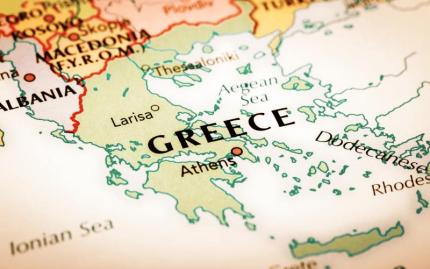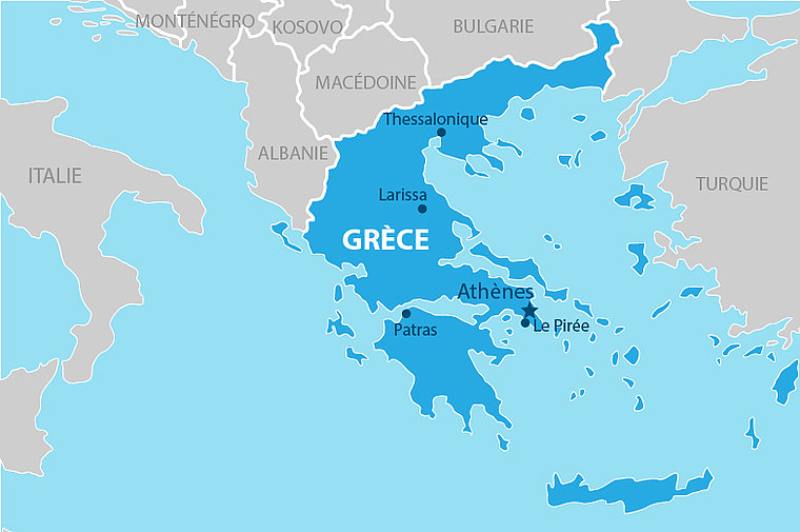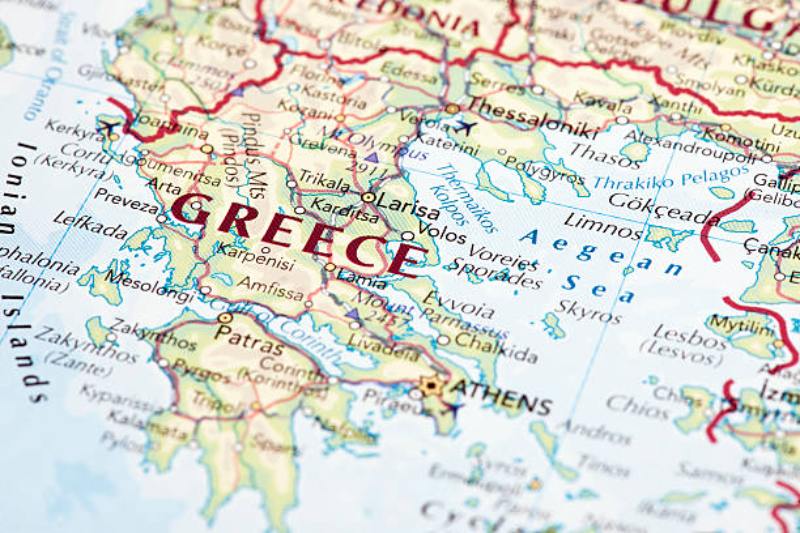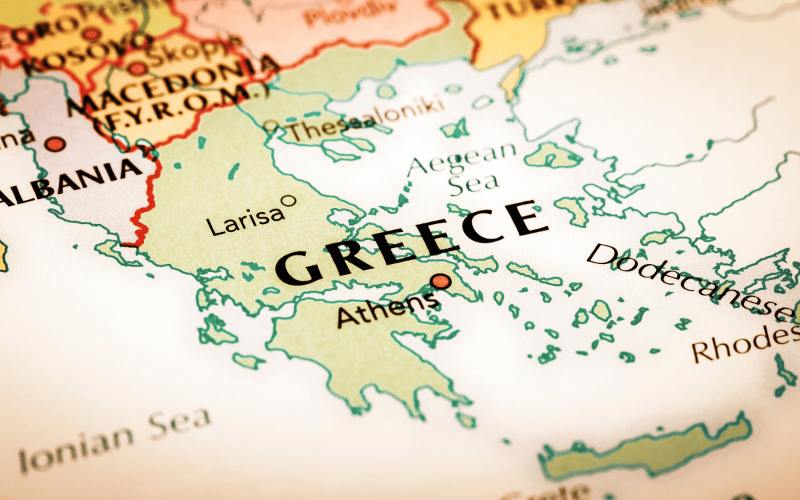Get free consultation
Fill out the form and we will contact you
Greece, with 13 administrative regions, 227 inhabited islands, and a coastline of 13,676 km, is a country with diverse terrain in Southeastern Europe. This article provides detailed information about the map of Greece—stay tuned.
Greece (officially: the Hellenic Republic) is a country located in Southeastern Europe, covering an area of 131,957 km²—ranking 95th in the world and 15th within the European Union in terms of size. The country occupies a strategic position at the crossroads of Europe, Asia, and Africa, serving as an important cultural and commercial bridge.
Greece is located in Southeastern Europe
On the map, Greece shares borders with:
North: Albania (212 km), North Macedonia (234 km), and Bulgaria (472 km)
East: Turkey (192 km) and the Aegean Sea
South: The Mediterranean Sea
West: The Ionian Sea
Notably, Greece is known for its impressive coastline of 13,676 km—one of the longest in the world—along with thousands of large and small islands that create its unique beauty.
Greece’s terrain is extremely diverse, including:
Mountains: Covering about 80% of the country, with the Pindus range forming the backbone from the northwest to the southeast. The highest peak is Mount Olympus (2,917 m), known in Greek mythology as the home of the godsvị thần.
Plains: Mainly located in Thessaly, Macedonia, and Thrace, these areas serve as the country’s primary agricultural regions.
Archipelagos: Greece has around 6,000 islands and islets, of which 227 are inhabited. The islands are grouped into major clusters: the Cyclades, Dodecanese, Ionian, Northern Aegean, and Sporades.
Greece’s terrain is extremely diverse, featuring numerous archipelagos
Administratively, the map of Greece is currently divided into 13 regions (peripheries), including:
Attica (Attiki): Southeastern region of Greece, home to the capital, Athens, and serving as the country’s economic, political, and cultural center. Population is approximately 3.8 million (2024).
Central Macedonia (Kentriki Makedonia): Northeastern region with Thessaloniki as its largest city—the second largest city in Greece and an important port.
Eastern Macedonia and Thrace (Anatoliki Makedonia kai Thraki): Northeastern region bordering Turkey and Bulgaria.
Epirus (Ipeiros): Northwestern region bordering Albania, known for its rugged mountainous terrain and traditional villages.
Thessaly (Thessalia): Central region with vast and fertile plains, serving as a major agricultural area.
Central Greece (Sterea Ellada): Southern mainland region connecting the Peloponnese peninsula to the rest of the country.
Peloponnese (Peloponnisos): Southern peninsula connected to the mainland by the Isthmus of Corinth, currently spanned by the Corinth Canal.
Ionian Islands (Ionia Nisia): Includes western islands such as Corfu, Zakynthos, and Kefalonia.
Northern Aegean Islands (Voreio Aigaio): Islands in the northeastern Aegean near the Turkish coast, including Lesbos, Chios, and Samos.
Southern Aegean Islands (Notio Aigaio): Includes the Cyclades and Dodecanese island groups.
Crete (Kriti): Greece’s largest island and the fifth largest in the Mediterranean.
Western Macedonia (Dytiki Makedonia): Northwestern mountainous region.
Western Greece (Dytiki Ellada): Southwestern region bordering the Ionian Sea.
Athens (Αθήνα): The capital with a population of approximately 3.2 million (metropolitan area), serving as the country’s economic, cultural, and political center. The city has a history of over 3,400 years, featuring famous landmarks such as the Acropolis and Parthenon.
Thessaloniki (Θεσσαλονίκη): The second largest city with a population of around 1 million, acting as a commercial, industrial, and important port center in northern Greece.
Patras (Πάτρα): The third largest city, serving as the main port connecting Greece with Italy and Western Europe.
Heraklion (Ηράκλειο): The largest city on the island of Crete, serving as the island’s tourism and economic hub.
Larissa (Λάρισα): The center of the Thessaly region, and the largest inland city.
Greece has thousands of islands; below are some of the most famous:
Crete (Κρήτη): The largest island in Greece, covering 8,336 km², famous for the ancient Minoan civilization and tourist destinations such as Heraklion, Chania, and Rethymno.
Rhodes (Ρόδος): The largest island in the Dodecanese, renowned for the Old Town of Rhodes, a UNESCO World Heritage Site.
Corfu (Κέρκυρα): A northwestern island influenced by Italian culture, featuring unique architecture and cuisine.
Santorini (Σαντορίνη): A volcanic island with picturesque white and blue villages, one of the world’s top tourist destinations.
Mykonos (Μύκονος): Famous for its beaches, vibrant nightlife, and traditional Cycladic architecture.
Zakynthos (Ζάκυνθος): Known for Navagio Bay (Shipwreck Beach) and the Caretta caretta sea turtles.
Lesbos (Λέσβος): Greece’s third largest island, famous for olive oil and ouzo.
Naxos (Νάξος): The largest island in the Cyclades, known for its beautiful beaches and historical sites.
Kos (Κως): The birthplace of Hippocrates, the “father of medicine,” with many ancient ruins.
Paros (Πάρος): Renowned for its white marble and the charming fishing village of Naoussa.
Greece has thousands of different islands
Understanding the map of Greece, the characteristics of each region, and development plans is an important first step when considering investment and residency in this beautiful country. Contact Second Citizenship for free and detailed advice on relocating to Greece.
Fill out the form and we will contact you



